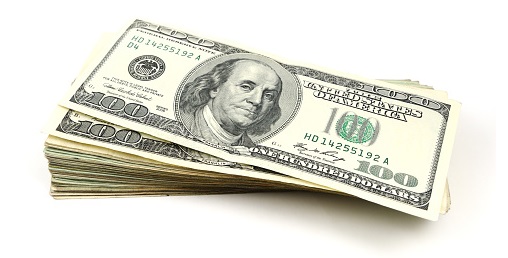The last few weeks have been characterised by an uptick in fears and chatter relating to growing global inflation risks. Over the course of September, Eurozone 5-year inflation swaps, a commonly cited measure of market-based expectations for Eurozone inflation over the next five years, have risen sharply from under 1.70% to current levels just under 1.80%, meaning they are on the verge of breaking out to their highest levels since 2015 if they can push a few more bps higher in October. Meanwhile, since the 22nd of December FOMC meeting, US 10-year inflation break-evens (a widely followed measure of market-based inflation expectations for the US over the next 10 years) has risen sharply from close to multi-month lows in the 2.25% region back to the upper 2.30s% area, putting them back within a few bps of summer highs just above 2.40%. The rise in inflation expectations comes amid a “perfect storm” of supply-side driven inflation developments, including; 1) a continued surge in global natural gas prices, driven by fears of a shortage of the commodity this winter as demand for it surges in the northern hemisphere to heat homes and buildings – US natural gas futures are up well over 100% since the start of Q2 and those gains are modest compared to the price surges being seen in Europe and Asia – and, 2) further evidence that supply chain disruptions, such as HGV driver shortages in Europe (most notably the UK) and general transportation backlogs, are having a severe impact in terms of both creating shortages that push up prices and hurting economic activity.
Gold is commonly referred to as the “ultimate inflation hedge”. The theory goes that as the debasement of fiat currencies (driven by loose fiscal and monetary policy) proceeds, gold – like other hard assets – is able to hold its value in real terms. Moreover, given its historical status as the ultimate form of money (gold and other precious metals have been used as money by humanity as long as the concept of money has existed), as confidence in fiat currencies subsides, people turn to gold, as they can be sure that it will always have value. Given this argument, which is actually a pretty sound one, why have gold prices been struggling as of late?
For reference, spot prices more than 3.0% in September, falling back from summer highs in the $1830s to current levels around the $1750 mark and technicians are talking about a slide all the way to the next key area of support at the $1700 level and the double-bottom at $1680 (the March and August lows) just below it. The reason for gold’s decline is that, while long-term currency debasement will eventually lead to gold appreciating at a rate at least equal to the rate of inflation in the US (in dollar terms), investors are more focused on some of the key short-term drivers of gold, which have been negative in recent weeks. I am of course talking about gold’s negative correlation to both the US dollar and US real yields – given most gold volumes are traded in USDs (just like a huge chunk of global trade is conducted in USDs), when USD appreciates, it makes USD-denominated spot gold prices more expensive to the holders of foreign currencies, thus reducing its appeal. Meanwhile, gold is a zero-yielding asset. Therefore, when the inflation-adjusted yields on US government bonds rise, this makes them a relatively more attractive destination for investment versus non-yielding gold.
Since the start of September, the Dollar Index (DXY) has reversed from lows around 92.00 to hit highs at 94.50, before moderating at the start of October to just above the 94.00 level. Meanwhile, since the start of September, US 10-year TIPS yields have risen from close to -1.10% to current levels above -0.9% the largest such rise over any one-month period since February. What has driven these moves? Well, concerns about the impact on Chinese financial stability and economic growth amid the ongoing Evergrande collapse triggered selling in global equity markets and this favoured safe havens like the US dollar. Meanwhile, on the 22nd of September, the FOMC surprised markets with a much aggressive than expected rate hike guidance in the form of its updated dot-plot, which now sees at least one 25bps rate hike by the end of 2022 and a further seven before the end of 2024, which would see the Federal Funds target range rising to 1.75-2.00%.
This spurred a rally in real yields (real yields driven by a combination of inflation expectations – the higher they are, the lower real yields are – and central bank monetary policy – the tighter it is, the higher real yields are), which inadvertently increased the appeal of the US dollar (people want to move money from other countries to the US to take advantage of better US real yields). Importantly for the US dollar, whilst inflation expectations have been rising globally (as noted at the start), real yields have not also risen globally. That’s because while investors are confident the Fed will soon (i.e. by the end of 2022) start hiking interest rates to address inflation, they are less confident central banks like the ECB, BoJ and SNB will. Thus, real yields in Europe stayed put in September, further increasing the appeal of the US dollar (as noted, you have to buy dollars first before you can by US government bonds to take advantage of the improved real yield).
So all of these short-term factors, which mainly centre around the fact that the Fed’s policy guidance become more hawkish whilst other central banks like the ECB’s didn’t, combined to push the US dollar and US real yields higher, a pretty toxic combination for gold. Looking ahead, October could be a bumpy month; US politics are in focus with the debt ceiling looming and if Congress fails to agree on a way to raise/suspend it, an “accidental” US default is on the cards which could be gold supportive. US data in the coming week and month will as usual be very important and any evidence of a faltering labour market may boost gold as investors might see the weakness as putting pressure on the Fed to be more patient in terms of its monetary policy tightening plans.
But most suspect that the Fed is on autopilot to tapering its QE programme before the end of the year regardless of the data because Fed members seem to have implicitly agreed that continuing with QE when inflation in the US is already running well above target is unlikely to be providing any helpful stimulus to the economy. Indeed, most Fed members seem to agree that QE is most useful in the way it can help to prevent a financial crisis (like it did when the Fed introduced in March 2020) and financial crisis risk in the US economy right now is low, therefore QE doesn’t have much use. In that regard, the Fed seems to be inexorably heading towards policy tightening and with inflation risks only seemingly rising in recent weeks, the risks seem tilted towards expectations pointing towards more rate hikes in 2022 rather than less. If this is the case, it won’t be good for gold. Fundamentally, a test of the annual lows at $1676 sometime in the coming months seems likely.




